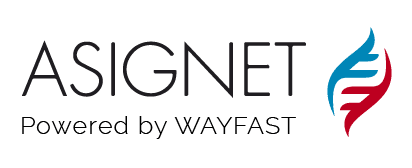The entire Telecom/IT world is moving from a Capex to an Opex business model.
The question CIOs need to answer: How to manage IT consumption?
Due to the evolution, it is truly amazing that the majority of Telecom/IT expense management cost reconciliation is still performed manually using spreadsheets and other antiquated forms, and this means that are an inefficient drag on business productivity.
The dissatisfaction with these methods reflects in a 2018 CIOs Trend Report from InfoTech Research Group, which states that “only 30 percent of business leaders are satisfied with IT core services, while less than 40 percent are satisfied with ITs ability to deliver solutions that satisfy business capability needs.” This trend is continuously increasing, so comprehensive technology lifecycle management is no longer a nice to have; it is 100% a need to have.
Due to the need to manage IT, Telecom and Cloud consumption in a streamlined and cost-effective manner, it is crucial that CIOs identify a solution that allows them to explicitly index inventory, and compile those records into a singular Robotic Process Automation (RPA) driven platform.
This is key to achieving complete visibility of asset inventories, consumption, and all associated costs. Companies should hone their Technology Expense Management strategy based on a lifecycle management approach by a single integrated platform. The benefits of this approach can be substantial.
So why are the TEM strategies of so many companies ineffective?
According to Stephen Mann, senior analyst with Forrester Research, frequently businesses lack insight into the inventory and consumption they use to achieve their goals or do not have adequate platforms to help them to view and manage to manage this new evolving world efficiently based on existing processes.
This is a mistake, but there is encouraging news: Awareness of the key role TEM plays in an organization is increasing due to factors such as expenses and the need for business process automation.
When it comes to developing a TEM strategy, nothing can be more impactful than utilizing automated RPA workflows to reduce manual intervention in the collection and management of vendor data to improve financial oversight, increase operational efficiency, control expenses, reduce cost and minimize risk.
Organizations that can automate processes such as invoice ingestion, provisioning, contract management, cost allocations, usage management, and disparate integration systems will free up resources that re-direct them to activities that drive top-line revenue. Many companies acquire several tools to realize these objectives, rather than identifying one solution that takes inventory of all telecom, IT, and Cloud SaaS assets within the organization to an RPA driven single platform.
Having one comprehensive view is the more desirable approach, for many reasons.
It gives the enterprise the ability to associate the vendor, cloud, and physical network layer together allowing for visibility and control of database inventory and associated expenses.
In short, all the essential information related to TEM is tied into an economic engine that gives a manager the ability to look into one portal and see everything from the network edge to the cloud to Telecom and SaaS vendor portals to the end-user. It compiles the location of each asset, who is using them, the associated expenses, and cost allocation.
This consolidated view eliminates manual intervention, saving time, and reducing error. All data is stored in one portal with integrated with RPA tied to real-time CMDB, limitless parsing with all data being pushed to Microsoft reporting power BI engine.
Technology Expense Management is a universal issue, and its importance will only grow in the coming years. CEOs turn to their CIOs, and Telecom & IT departments need to keep a real-time inventory of all telecom & IT/Cloud SaaS assets that exist within their organizations. They need reports that are thorough and clear.
This allows for true integration between services, devices, and people through the automation of business processes. It provides a clear understanding of what systems and equipment exist, how components are used, what they cost, and how they impact Telecom & IT and business services.
Contact us for more information about our Telecom Expense Management solution.






